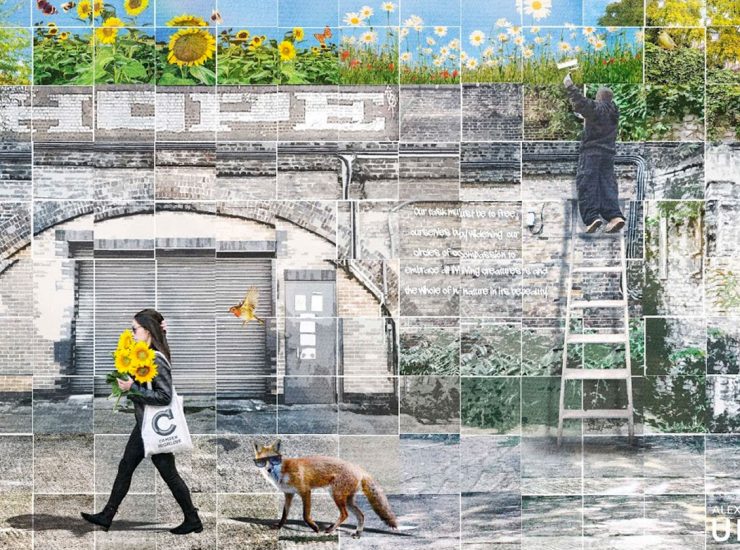Tackling climate change through creative landscape architecture
For far too long humans have considered themselves separate, distinct, dominant to the rest of nature. Nature and landscape architecture has only been considered in terms of the value that we as humans bestow upon it, for our own purposes, and to satisfy our never-ending desire for consuming and accumulating more: more power, more things, more stuff. Years of constant exploitation of our landscapes, our natural capital, our planet, through industrialisation and urbanisation, has not only resulted in lonely and lifeless places, but has left our precious and finite world on the brink of collapse.
Our urban environments stand witness to the value humans give the natural world, and not to be forgotten, the value we give to ourselves; most often they provide a very sorrowful picture. The radiance of life is snuffed out or buried deep by layers of infrastructure that resist its presence. But creative life persists, forging tiny cracks to root into, clinging to brick walls, or sprouting from contaminated railway lines. Surely if we were to consider urbanity’s treatment of nature as a personal relationship, we would identify it as dysfunctional. Both parties suffer.
Is there not a better way? Can we not imagine a relationship that replaces exploitation and dominance with compassion and care? Is there not a way of being in the world, in which humans and all of nature thrive, with an understanding that we as humans are part of nature, rather than separate from it?
Yes. But to do so will require a radical paradigm shift. Traditional ideas, patterns and relationships will need to be deconstructed, and meaningful new ideas brought to light. Perhaps if we rotate our view to provide a broader orientation, a landscape perspective, will the beautiful mosaic of human and natural forces be reframed. This presents a kinder, more inclusive and moderate place, where joy is found in the beauty of life and its many delights. Here humans will take responsibility for cultivating our environments and caring for all living creatures and natural processes; for without them, we are nothing.
This change has already begun. It is this creative tension, this gap between our current reality and our vision of what the world could be, that will drive us forward. We humans are gifted with the creative power to imagine new possibilities. Landscape architecture can help us to make that leap, by helping us to refocus, to connect, and to reframe our connection to the world in which we live.
Our task now is to work collaboratively, to contribute our talents, and to unlock the intelligence of the land – soils, water, air – in our quest for a new world: a transcendent place of hope. Only when we have understood our interdependence with all of nature will we be capable of restoring health to our precious planet.
Written by Alexandra Steed, Founding Director
Originally published on LinkedIn, April 2022. Read more insights on our Insights page.



